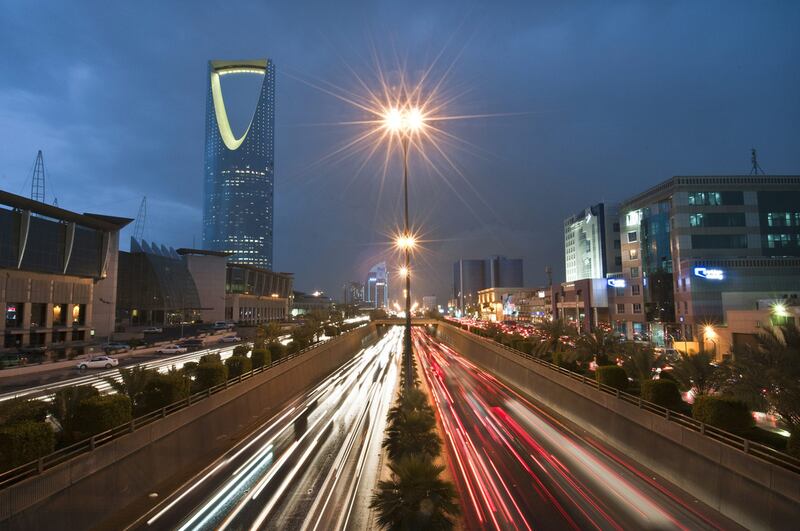Higher oil prices, the easing of Opec+ production caps and the introduction of a mass inoculation programme to stem the pandemic will drive Saudi Arabia’s economic growth up until the end of 2024, S&P Global Ratings said.
A sharp rise in the non-oil gross domestic product of the kingdom will also support economic growth momentum, S&P said in its semi-annual review of Saudi Arabia on Tuesday. It estimates the Arab world's largest economy will grow 2.4 per cent annually on average throughout the 2021-24 period.
The ratings agency affirmed the country’s A-/Stable/A-2 sovereign rating and said the stable outlook indicates “an improvement in oil sector dynamics”, along with the country’s strong government and external net asset positions.
“In 2021, the economy has begun its recovery [and] the country saw a particularly sharp rebound in real non-oil economic activity in the second quarter of 2021, with sectors including real estate, manufacturing, and wholesale and retail trade, restaurants and hotels improving,” S&P said.
Saudi Arabia has bounced back strongly from the pandemic-driven slowdown that tipped the global economy into its deepest recession last year since the 1930s. S&P's estimate for Saudi economic growth in 2021 is in line with that of the International Monetary Fund.
The kingdom’s swift response to the Covid-19 pandemic and rebound of its non-oil sector and investment from its sovereign wealth fund – the Public Investment Fund – are the main drivers of growth this year, the lender said in July.
The IMF expects the country’s non-oil economy to grow 4.3 per cent this year, while, Capital Economics is more bullish and has forecast an expansion of 4.8 per cent this year and 6.3 per cent in 2022.
The kingdom, which is trying to transform its economy way from oil, earns a large chunk of revenue from the sale of hydrocarbons. The Opec+ group of producers, led by Saudi Arabia and Russia, is bringing back 2 million barrel per day to the market by the end of 2021. It is set to decide whether to bring an additional 400,000 bpd of supply in October.
“Stronger oil prices in 2021 and higher volumes [of oil production] from 2022, alongside government efforts at fiscal control, will support fiscal and external accounts in 2021-24”, S&P said.
Low oil prices in 2020, widened the government’s deficit to 11.2 per cent of GDP, despite a mid-year rise in VAT to 15 per cent from 5 per cent.
However, given “significantly higher oil prices in 2021, alongside continued fiscal control measures, the central government deficit is forecast to fall sharply to 4.3 per cent of GDP, and then average 5.7 per cent in 2021-24,” the ratings agency said.
Oil prices that slumped sharply last year have rebounded as the global economy continues to recover and pandemic-related movement restrictions are eased, boosting demand for crude.
Brent, the benchmark for more than half of the world’s crude, hit a three-year high on Tuesday, topping $80 per barrel mark.
S&P expects the kingdom’s gross debt as a percentage of GDP to rise until 2024 as the country continues to tap debt markets to fund its fiscal deficit.
“Saudi Arabia's external metrics [however] remain strong. We expect reserves to cover an average of 15 months of current account payments in 2021-2024 [period], as the country maintains a strong net external asset position,” S&P said.






